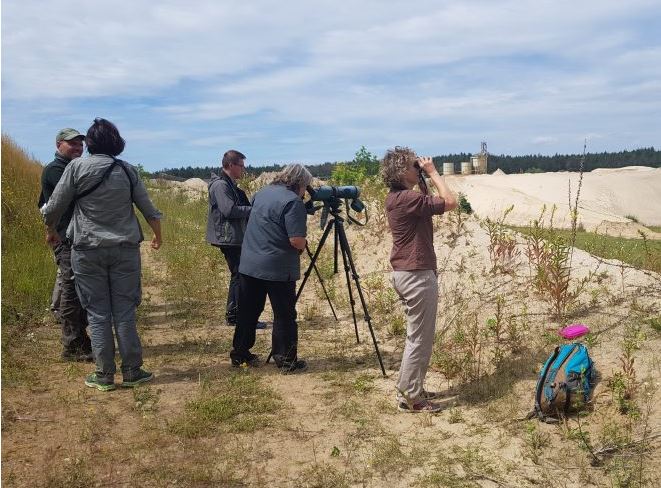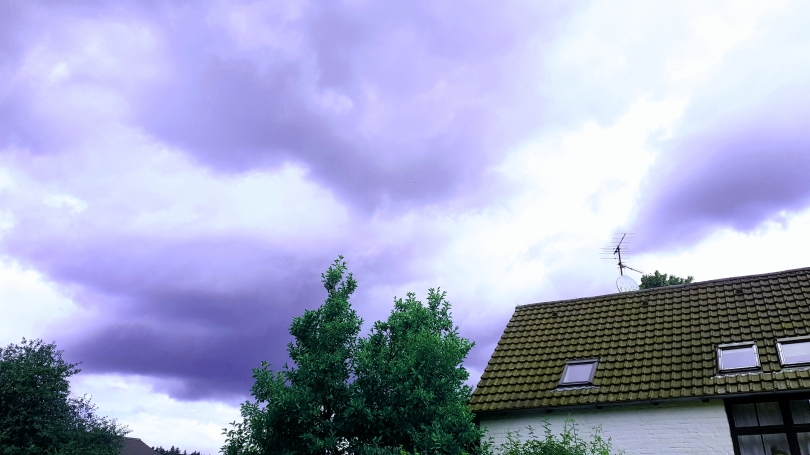Visiting the northernmost breeding area of these multicolored summer guests

Photo by Hwbund in the Kaiserstuhl area, Germany, 2017, CC BY-SA 4.0
This seemingly tropical bird has only been resettling in Germany since the 1990s, but since then with steadily and exponentially increasing population numbers. The population here in 2023 amounted approximately to 2,500 breeding pairs. The colourfulness of the bee-eater is exotic, because hardly any other breeding bird in Germany has such colourful plumage. Because of this northward spread the bee-eater is often described as the winner of climate change. Presumably, rising summer temperatures and decreasing precipitation are probably factors contributing to the northward spread of the species. As a long-distance migrant, the bee-eater spends the winter in southern Africa. It is in its breeding grounds in the North from May to August.

Summer residence of the bee-eaters – a gravel pit near the village of Gerswalde (district Buchholz), Uckermark
Nowadays, the fabulous bee-eaters made their way even to the very northeast of Germany close by the city of Prenzlau where they live in an operating surface mine which produces sand and gravel. In July 2020 I joined an ornithological excursion to this site led by the fabulous ornithologist Derk Ehlert who is also the responsible Wildlife Officer of Berlin. Fortunately, weather was fine so the bee-eaters were very active outside of their nesting caves – at that time 6 breeding pairs. Once a bee-eater even flew over our heads, but the birds live inside the pit, a restricted area, so we could watch them usually only from a distance of 200-250 m. They usually arrive at this site around 10 June and as real migrating birds leave again by 31 July when they will have already raised their brood.

Spotting scopes and binoculars required for observation of birds
Bee-eaters (merops apiaster) belong to the bird genus merops, a name emerging also in Greek mythology. There, Merops used to be the mythical king of the Meroper on the Greek island of Kos who had been transformed to an eagle by the goddess Hera. And the bee-eaters also like the Mediterranean area and prefer warm climate zones.

Flowery view on the technical facilities of the gravel pit
The bee-eater was considered extinct in Germany at the end of the 1980s. His habitat is open landscapes with individual trees and bushes, and the birds breed in dug caves on steep slopes. All what the birds require can be found in this gravel pit very well, and even when temperatures are not too high, the white sand here is heated by the strong July sun, so it should be always quite cozy for these birds.

Bee-eaters in typical mode, photo: Axel Beck
Bee-eaters are often found in colonies. They like to sit, usually together with their peers, on outstanding branches, wires and masts. Through the spotting scope I myself could see 5 birds sitting on a distant bush in July 2020, so maybe they just had a small siesta talk.

In a hill next to the gravel pit some holes and abandoned nest caves which might also be the work of black-tailed swallows (riparia riparia)
I found the place very fascinating, the mixture of technology, archaic steppe and wildlife an interesting symbiosis. The bee-eaters have seized a new living space here in the North where they apparently feel quite comfortable in Summer.
***************************************
Phillip Boa & the Voodooclub, Like a Happy Reptile, 2023




You must be logged in to post a comment.